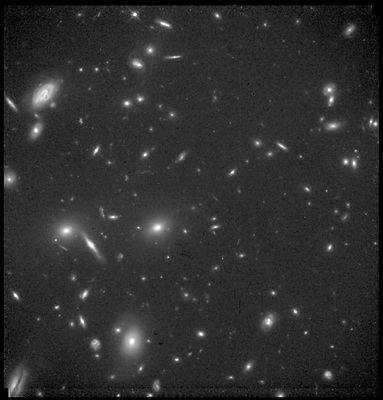| This
NASA Hubble Space Telescope (HST) image of the central portion of a remote
cluster of galaxies (CL 0939+4713) as it looked when the universe was two-thirds
of its present age. Hubble's high resolution allows astronomers to study,
for the first time, the shapes of galaxies as they were long ago.
The Space Telescope pictures are sharp enough to distinguish between
various forms of spiral galaxies. Most of the spiral, or disk, galaxies
have odd features, suggesting they were easily distorted within the
environment of the rich cluster. Hubble reveals a number of mysterious
"fragments" of galaxies interspersed through the cluster. |
 |
The
HST picture confirms that billions of years ago, clusters of galaxies contained
not only the types of galaxies dominating their descendant clusters today,
but also several times as many spiral galaxies. These spiral galaxies have
since disappeared through mergers and disruptions, as evident in the Hubble
image. |
|

